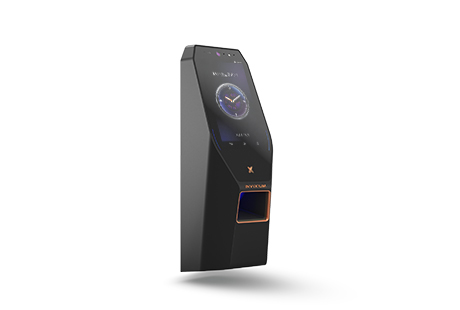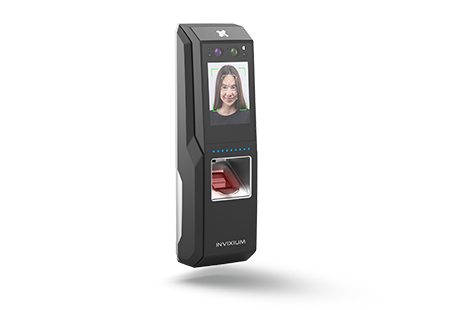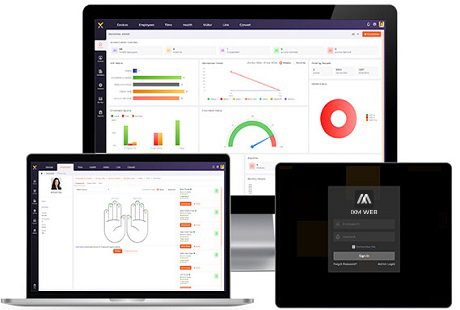- Unique to each person
- Always with you so cannot be stolen, lost or forgotten
- Do not change over time
Improve Business Security with Biometric Access Control
Access control: it’s a basic element of security, but protecting people and data is anything but simple. When people are confident in their safety at work, they can be more productive. And, when data is protected, managers, users and customers can all feel comfortable that their private information is secure. Access control is all about protection, security and peace of mind. With Invixium, you can achieve that and more.
Picture Your Business With
Invixium Access Control
As a basic security measure, access control is important to businesses of any size and type. Examples of access control include lock-and-key, PIN pads, access cards, biometrics and more. When you use biometrics, you’re investing in a high-level, accurate and modern solution that makes a statement about how much you want to protect your business – and then follows through.
See how access control solutions from Invixium can benefit these scenarios:
Factories
A security manager at a large factory needs to allow a staff of 10,000 workers access to the facility, even when he isn’t on the clock. Printing 1,000 cards can be wasteful, and employees may lose or forget their credentials with no way of getting inside without them. So, biometrics are a good fit here. Because biometrics are the ID that’s always with you, and Invixium devices are built to support large workforces, this manager selects biometrics to ensure the building is protected when he isn’t there and his staff is never locked out.
Enterprises
An IT director at a large office building wants to ensure no one has access to executive offices while managers aren’t there. He also wants to give each manager the ability to grant access into their own personal office through a voice intercom and an easy-to-use software. He selects biometrics for their high level of security and modern appearance as a way to represent the company’s values, and also because devices from Invixium – like IXM TOUCH 2 – offer two-way voice communication for visitor management.
High Risk Areas
A COO at a data center needs to assure her managers and customers that data is as tightly secure as can be. Only a few people are allowed access to the physical location where data is stored, and she needs a surefire method to secure this area. She doesn’t trust the facility’s current PIN system because PINs can easily be lost, shared, or otherwise compromised. So, she invests in biometrics as an extra layer on top of the existing system, layering PINs with biometrics for three-factor authentication to prove the identity of anyone accessing her facility.
Calculate Your Access Control ROI
Access control is absolutely invaluable in terms of protecting the people, products and data at your business. But, biometric access control offers other monetary and environment benefits too, such as:
Payroll
Reducing payroll for security staff by switching to an automated biometric system
Plastic
Reducing the amount of plastic waste and card-ordering costs if switching from a card-based system
Time
Reduced false match or false failure rates to ensure staff and visitors can gain access quickly and easily, without frustration
Future-Proofing
Invixium biometric access control is designed to scale, such as the addition of temperature screening and mask detection rules during COVID-19, so you can stay with the same system for a long period of time instead of transitioning again in the future
Protection
Safeguarding sensitive data and inventory can reduce loss or theft, which could amount to major cost savings
FAQS
- What is access control?
As the name suggests, access control is the concept of controlling or restricting access of unauthorized individuals to a place like a designated high security area or to a resource like a highly sensitive document.
- What is a biometric access control system?
A biometric access control system is where an individual’s biometric credentials like their face, fingerprint, finger vein or iris are used to authenticate user identity and to authorize the user to access a door, usually to a secure area.
- How does biometric access control work?
In biometric access control, a user presents one or more of their biometric credentials to devices which perform biometric matching using advanced algorithms for user authentication and grant access to the user upon successful authentication.
- Why are biometrics used in security systems?
Biometric access control systems allow companies to organize a secure, efficient, reliable and cost-effective system of access control compared to traditional methods that use cards or keypads. The use of biometric technologies avoids problems such as lost and stolen cards, transfer of cards to other persons, setting and remembering PINs and passwords.
Biometric identification systems are the most effective where security is of concern because they recognize physical characteristics unique to every human.
- What are the benefits of using biometrics for access control?
Biometrics prove one's identity, irrefutably, by using a characteristic that is unique to everyone. Biometrics are the only way to prove “YOU ARE WHO YOU SAY YOU ARE”.
The information needed for biometric authentication is unique to each person, is always with them, and usually does not change over time.
Advantages of Biometrics:
- How do biometric fingerprint readers work?
When a finger is presented to a device, the fingerprint pattern that consists of minutiae is captured by a fingerprint sensor that may use one of many technologies.
The enrollment process:
- The sensor captures a RAW image of the fingerprint
- The RAW image of the fingerprint is processed by an algorithm on the device to create a template
- This template is encrypted using advanced encryption methods and then stored in secure manner

During verification, when a user places his/her finger on the fingerprint sensor again, a fresh template is compared with the enrolled template using the same algorithm to calculate a similarity score and to decide whether it was a match or a not.
- How does biometric face recognition readers work?
Face recognition readers are very similar to fingerprint readers except for the fact that instead of a fingerprint, an individual’s face is used as a biometric and instead of a fingerprint sensor, a camera is used to capture an image of the face.
When an individual presents their face in front of a face recognition device, the face image is captured by a camera.
The enrollment process:
- The camera captures a RAW image of the face
- The RAW image of the face is processed by an algorithm on the device to create a template
- This template is encrypted using advanced encryption methods and then stored in secure manner

During verification, when a user presents their face to the camera again, a fresh template is compared with the enrolled template using the same face recognition algorithm to calculate a similarity score and to decide whether it was a match or a not.







